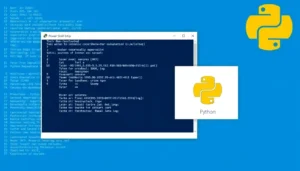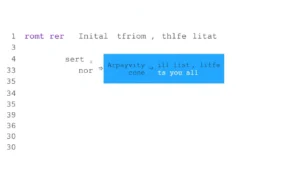How to Anticipate Fed Rate Decisions Amid Inflation Fears
- THE MAG POST

- 9h
- 3 min read

Anticipate Fed rate decisions by delving into the fissures among Federal Reserve officials, where concerns over stubborn inflation clash with calls for economic support. This analysis uncovers how internal dissent and key indicators shape monetary policy, offering insights to navigate financial uncertainties with greater foresight and precision.
The Federal Reserve's recent decision to lower interest rates has exposed deep divisions among its officials, revealing a complex tug-of-war between persistent inflation concerns and the perceived need for economic stimulus. You'll learn to anticipate Fed rate decisions by analyzing these internal debates and economic indicators, providing a clearer lens on monetary policy's future direction.
Divisions Within the Federal Reserve
A significant faction of Fed officials, including Kansas City Fed President Jeff Schmid, openly opposed the latest rate cut, arguing that elevated inflation demands a more cautious approach. Schmid emphasized that structural shifts in technology and demographics, not monetary policy, are the primary drivers of labor market stresses. He warned that premature easing could undermine the Fed's credibility in achieving its 2% inflation target.
Core Inflation Metrics and Data Gaps
The Consumer Price Index (CPI) for September registered at 3%, slightly below expectations but showing a gradual increase from August's 2.9%. Core CPI, which excludes food and energy, also held at 3%, indicating sticky price pressures. With the government shutdown delaying the Personal Consumption Expenditures (PCE) index release, policymakers relied on CPI proxies, estimating PCE around 2.8%.
Dissenting Votes and Their Rationale
Schmid's dissent in favor of holding rates steady was mirrored by Dallas Fed President Lorie Logan and Cleveland Fed President Beth Hammack, who cited inflation risks. Conversely, Fed Governor Stephen Miran advocated for a more aggressive 50-basis-point cut, highlighting the internal split. These disagreements underscore the uncertainty in calibrating policy amid mixed economic signals.
Inflation Dynamics and Economic Pressures
Inflation remains stubbornly above the Fed's 2% goal, fueled by sustained demand and supply-side constraints. Officials like Schmid stress that maintaining higher rates is essential to cool overheated sectors and anchor inflation expectations. This stance reflects a broader concern that easing too quickly could reignite price spikes, complicating the path to stability.
Labor Market Structural Changes
Demographic aging and technological automation are reshaping employment landscapes, reducing the efficacy of rate cuts in addressing job market imbalances. Schmid noted that a 25-basis-point reduction would have minimal impact on these deep-seated issues. Instead, focused fiscal and regulatory measures are needed to adapt to these transformations.
Policy Transmission Mechanisms
Interest rate adjustments influence borrowing costs, consumer spending, and investment, but their effects lag and vary across sectors. In the current environment, high rates aim to temper demand without triggering a recession. However, the risk of overtightening looms, potentially stifling growth if inflation proves more entrenched than anticipated.
Forward Guidance and Market Implications
Fed Chair Jerome Powell's remarks that a December rate cut is not assured have injected volatility into financial markets, as investors recalibrate expectations. This uncertainty underscores the importance of closely monitoring Fed communications and economic data releases. You'll learn to anticipate Fed rate decisions by interpreting these signals, aiding in more informed investment and policy analysis.
Economic Projections and Scenarios
Baseline forecasts assume a gradual decline in inflation toward 2%, but upside risks from geopolitical tensions or supply chain disruptions persist. Downside scenarios include a sharper economic slowdown if restrictive policy is maintained too long. Balancing these outcomes requires agile policy adjustments based on real-time data.
Investor Sentiment and Asset Prices
Equity and bond markets react sensitively to Fed guidance, with rate-cut expectations driving rallies and hikes prompting sell-offs. The current dissent suggests a higher bar for future easing, potentially supporting the US dollar and pressuring risk assets. Long-term, clarity on the Fed's commitment to its inflation target will be crucial for stability.
Synthesizing Monetary Policy Pathways
The Fed's internal divisions highlight the delicate balance between combating inflation and supporting growth, with no clear consensus on the optimal path forward. As economic data evolves, policymakers must weigh rising price pressures against the risks of over-restriction, making each decision pivotal for global financial stability. Ultimately, mastering how to anticipate Fed rate decisions involves dissecting these nuanced debates and their implications for a broader economic landscape.
Fed Official | Stance on Rate Cut | Key Rationale |
Jeff Schmid | Opposed (Hold Rates) | Inflation too high; structural labor issues not addressed by cuts |
Lorie Logan | Opposed (Hold Rates) | Preference for steady rates due to inflation risks |
Beth Hammack | Opposed (Hold Rates) | Supports holding rates to manage price pressures |
Stephen Miran | Dissented (Cut 50 bps) | Advocated for larger cut to stimulate economy |
Raphael Bostic | Supported (Cut 25 bps) | Rates still restrictive, but cautious on inflation |






















































Comments